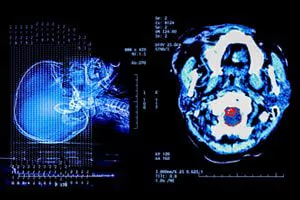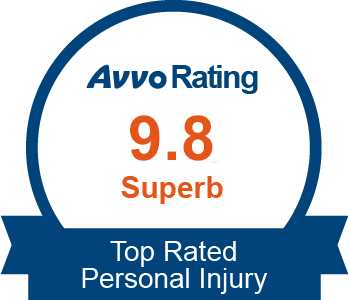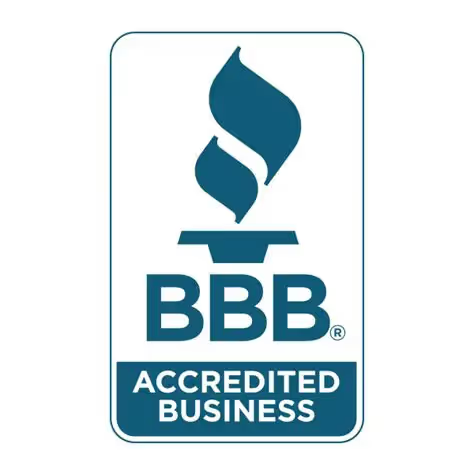What is Hypoxic-Ischemic Encephalopathy (also known as HIE)?
 Hypoxic-Ischemic Encephalopathy (or “HIE”) is a neonatal birth injury. The legal term “Birth Injury” refers to any type of harm that a baby suffers near the moment of birth, during labor, or through the delivery process. HIE injuries occur in approximately two out of one thousand live births. Hypoxic-Ischemic Encephalopathy injuries are comprised of three medical conditions:
Hypoxic-Ischemic Encephalopathy (or “HIE”) is a neonatal birth injury. The legal term “Birth Injury” refers to any type of harm that a baby suffers near the moment of birth, during labor, or through the delivery process. HIE injuries occur in approximately two out of one thousand live births. Hypoxic-Ischemic Encephalopathy injuries are comprised of three medical conditions:
- Hypoxia – The word “Hypoxia” means there is not enough oxygen (O2) entering the body’s tissues.
- Ischemia – “Ischemia” is the term used for describing the condition when not enough blood is reaching the brain or another vital organ.
- Encephalopathy – “Encephalopathy” refers to the brain damage caused by both Hypoxia and Ischemia.
Therefore, Hypoxic-Ischemic Encephalopathy is a brain injury caused by a drop in oxygen and blood flow to the brain. Hypoxic-Ischemic Encephalopathy is also referred to as perinatal asphyxia, birth asphyxia, and neonatal encephalopathy. Oxygen deprivation, also known as intrapartum asphyxia, can cause Cerebral Palsy (CP). One of the most common forms of brain damage associated with Cerebral Palsy is oxygen deprivation, known as hypoxic-ischemic encephalopathy, or HIE. When hypoxic-ischemic encephalopathy happens, it can result in a child who has cognitive or developmental delays, as well as motor impairments that become obvious as the child continues to develop. It is important to note that hypoxic-ischemic encephalopathy is one of the most life-threatening and serious types of brain damage to an infant that can happen during childbirth. Hypoxic-ischemic encephalopathy occurs when both the blood supply and oxygen to an infant’s brain are interrupted or restricted during childbirth, which causes the death of brain cells.
The Definition of Hypoxic Ischemic Encephalopathy (HIE)
Hypoxic ischemic encephalopathy (HIE) is an injury to the brain that is caused by the deprivation of oxygen to the brain, also known as intrapartum asphyxia. The infant’s body can deal with a certain amount of oxygen deprivation; however, if the deprivation is too long, it can cause serious damage to the infant’s brain. Hypoxic-ischaemic encephalopathy is the leading cause of death or severe impairment of infants who have suffered from oxygen deprivation. Children who survive childbirth can suffer from epilepsy, motor impairment, developmental delay, cognitive impairment, and neurodevelopmental delay. Typically, the level of impairment is not apparent until the child is between three and four years old. Asphyxia was long associated with causing Cerebral Palsy. However, some studies suggest that less than ten percent of cases are a result of asphyxia. In the remaining percentage of cases, factors such as complications of birth, issues immediately following birth, or premature birth can result in Cerebral Palsy. In some instances, the cause of hypoxic-ischaemic encephalopathy cannot be determined.
When Does Hypoxic-Ischemic Encephalopathy Occur?
Hypoxic-ischemic encephalopathy (HIE) commonly affects full-term infants; however, it also occurs in premature infants. The severity and timing of the oxygen loss can negatively affect the part of the brain that sustains the injury. If the injury happens before the 35th week of pregnancy, hypoxic-ischemic encephalopathy is likely to cause periventricular leukomalacia, or PVL. At 40 weeks of pregnancy, the degree of hypoxia pertains to the area of the brain that sustained the injury. Children with mild hypoxic-ischemic encephalopathy sustained injuries to their parasagittal white matter of the brain, while those with severe cases have an injury to the putamen, thalamus, and paracentral white matter of the brain.
The Risk Factors Associated with Hypoxic-Ischemic Encephalopathy
The loss of oxygen is the most significant risk associated with hypoxic-ischemic encephalopathy. The length and severity of the oxygen deprivation affect whether hypoxic-ischemic encephalopathy occurs and its level of severity. There are several events that cause asphyxia, which include, without limitation, the following:
- Trauma
- Uterine rupture
- Stress of labor and delivery
- Ruptured vasa previa
- Pressure to the cranium that causes bleeding or decreased blood flow to the brain
- Placental abruption
- Prolapsed cord
- Medical negligence
- Intrapartum hemorrhage
- Interruption in breathing or poor oxygen supply
- Impaired blood flow to the brain during the birthing process
- Injury from umbilical cord complications
- Injury from cephalopelvic disproportion
- Cardiac complications
- Blood containing less oxygen due to poorly functioning lungs
- Acute maternal hypotension
Diagnosing Hypoxic-Ischemic Encephalopathy (HIE)
As soon as hypoxic-ischemic encephalopathy (HIE) is suspected, imaging such as MRIs should be performed in order to determine the right diagnosis. There are also new techniques, including diffusion-weighted imaging and MR spectroscopy, that have proven successful if done so within the appropriate time frame. Otherwise, doctors, parents, and caregivers may notice the signs of hypoxic-ischemic encephalopathy, which, as noted above, include impaired motor function, delayed development, and delayed growth. After birth, there are certain signs of hypoxic-ischemic encephalopathy, which include organ dysfunction of the liver, heart, lungs, kidneys, and blood. Seizures are also common in children afflicted with HIE.
Treating Hypoxic-Ischemic Encephalopathy (HIE)
The treatment associated with hypoxic-ischemic encephalopathy involves helping the child adapt to symptoms that were caused by the injury to the brain. Infants with hypoxic-ischemic encephalopathy can receive physical or occupational rehabilitation. Asphyxia often causes permanent damage, which sometimes continues after the asphyxia has been relieved. In order to prevent additional damage, the child must be monitored to:
- Prevent or minimize cerebral edema
- Maintain normal blood pressure
- Maintain normal blood glucose
- Minimize or prevent cerebral edema
How is Hypoxic-Ischemic Encephalopathy (HIE) Prevented?
The best way to prevent hypoxic-ischemic encephalopathy is to avoid oxygen deprivation during pregnancy and delivery. It is important that parents and doctors understand the risk factors associated with hypoxic-ischemic encephalopathy. There are several measures to prevent hypoxic-ischemic encephalopathy, which include, without limitation, the following:
- Educating oneself about electronic fetal monitoring during the delivery process
- Understanding patient rights, including the right to obtain a second opinion
- Understanding the right not to be rushed into a decision when unwarranted, and the right to request personal medical records
- Confirming that a well-trained and certified obstetrician and anesthesiologist are available during delivery
Clarifying the Terminology of Hypoxic-Ischemic Encephalopathy (HIE) and the Causes of Cerebral Palsy
 The terminology of Cerebral Palsy (also known as CP) is very specific, yet very similar, and may be labelled as a brain defect, brain lesion, or brain malformation, which can be very confusing. Accordingly, it is helpful to know the difference between the terms when trying to understand the causes of Cerebral Palsy. The development of the brain occurs quickly after conception, when a small number of cells multiply and divide into billions of brain cells. There is a small strip of tissue in the brain called the neural tube. Specifically, one end of the neural tube develops into the brain while the other develops into the spinal cord. Keep in mind that different types of cells form and migrate to form other parts of the brain. The brain is fully developed between two to five years following birth. Defects of the brain relate to irregularities in the structure of the brain that cause impairment. These can be caused by brain malformation, illness, disease, or injury. The level of impairment is associated with the severity of the damage. Sometimes, the brain compensates for the defects by rewiring to compensate or bypass damaged areas. For this reason, starting treatment immediately is highly recommended. Malformations of the brain can occur due to the abnormal development of the brain. While defects can happen at any time during the development of a fetus, during the first 20 weeks, the infant is most vulnerable to complications. This means that any malformation that happens while the neural tube is forming can have lifelong consequences. A malformation of the brain can cause undeveloped areas, malformation, abnormal growth, and improper brain division in the lobes and hemispheres. Lesions of the brain are defects that can occur from disease or injury. The underlying causes of brain lesions that occur during the development of the fetus include infections, bleeding in the brain, asphyxia, toxins, and many others.
The terminology of Cerebral Palsy (also known as CP) is very specific, yet very similar, and may be labelled as a brain defect, brain lesion, or brain malformation, which can be very confusing. Accordingly, it is helpful to know the difference between the terms when trying to understand the causes of Cerebral Palsy. The development of the brain occurs quickly after conception, when a small number of cells multiply and divide into billions of brain cells. There is a small strip of tissue in the brain called the neural tube. Specifically, one end of the neural tube develops into the brain while the other develops into the spinal cord. Keep in mind that different types of cells form and migrate to form other parts of the brain. The brain is fully developed between two to five years following birth. Defects of the brain relate to irregularities in the structure of the brain that cause impairment. These can be caused by brain malformation, illness, disease, or injury. The level of impairment is associated with the severity of the damage. Sometimes, the brain compensates for the defects by rewiring to compensate or bypass damaged areas. For this reason, starting treatment immediately is highly recommended. Malformations of the brain can occur due to the abnormal development of the brain. While defects can happen at any time during the development of a fetus, during the first 20 weeks, the infant is most vulnerable to complications. This means that any malformation that happens while the neural tube is forming can have lifelong consequences. A malformation of the brain can cause undeveloped areas, malformation, abnormal growth, and improper brain division in the lobes and hemispheres. Lesions of the brain are defects that can occur from disease or injury. The underlying causes of brain lesions that occur during the development of the fetus include infections, bleeding in the brain, asphyxia, toxins, and many others.
The Symptoms of Hypoxic Ischemic Encephalopathy (HIE)
The symptoms of hypoxic-ischaemic encephalopathy (HIE) vary based on the severity of the brain damage. These include, without limitation, the following:
- Abnormal tendon reflexes and stiff muscles soon after birth
- Feeding problems, excessive sleeping or crying, and extreme irritability
- Lack of muscle tone and an absence of reflexes
- Poor sucking reflex and the inability to grasp
- Seizures
- Sporadic apnea
- Unresponsiveness to external stimuli
- Irregular breathing, abnormal movement with dilated pupils, and abnormal eye control
- Heart failure
- Abnormal blood pressure and heart rate
- Jaundice
- Hyperbilirubinemia
- Kernicterus
- Low “peak” and/or “mean” Total Serum Bilirubin (TSB) values
Hypoxic-Ischemic Encephalopathy (HIE) is a Risk Factor for Improperly Treated Neonatal Jaundice, Kernicterus (Bilirubin Encephalopathy), and Hyperbilirubinemia.
Kernicterus, also known as bilirubin encephalopathy, is a rare medical condition caused by bilirubin toxicity to brainstem nuclei and the basal ganglia. Neonatal jaundice is a relatively common condition that affects approximately 60% of newborns. However, severe cases of hyperbilirubinemia (> 20 mg/dL) could cause neurodevelopmental complications or kernicterus. Severely jaundiced newborns become hypotonic, lethargic, and “suck poorly” when attempting to feed. If improperly treated, hyperbilirubinemia can cause the newborn baby to become hypertonic (retain excessive fluids), develop fever, and present a high-pitched cry. The signs of hypertonia are arching of the back and neck. Infants that survive hyperbilirubinemia will often develop permanent and debilitating injuries such as hearing loss, dental dysplasia, intellectual handicaps, paralysis of upward gaze, and a severe kind of athetoid cerebral palsy. Athetoid Cerebral Palsy (or “dyskinetic cerebral palsy”) is a permanent physical condition caused by damage to a developing brain. Athetoid Cerebral Palsy is distinguished from the other Cerebral Palsy types due to the movement disorder’s abnormal, involuntary movements. Bilirubin-induced neurological complications occur when there is a delay in childbirth, a delay in delivery treatments, delayed phototherapy, and/or a failure to diagnose kernicterus or bilirubin encephalopathy. According to the American Academy of Pediatrics, any infant who has jaundice and requires phototherapy should have the following laboratory tests completed (especially if the infant is not responding to phototherapy):
- neonatal blood type,
- direct antibody titer or Coombs test,
- complete blood count and smear, and
- direct/conjugated bilirubin level.
Phototherapy utilizes an intense fluorescent light on the baby’s bare skin. The baby’s eyes are shielded from the fluorescent light that is used to speed up the decomposition and excretion of bilirubin through the baby’s skin. In some serious cases, another treatment option to remove bilirubin involves blood transfusion therapy. Jaundice is easy to diagnose and treat. Therefore, conditions such as kernicterus, bilirubin encephalopathy, and hyperbilirubinemia are preventable with proper medical attention and care.
Frequently Asked Questions About Hypoxic-Ischemic Encephalopathy (HIE)
What is Hypoxic-Ischemic Encephalopathy (HIE)?
Hypoxic ischemic encephalopathy (HIE), also referred to as birth asphyxia, is a neonatal brain injury caused by the insufficient flow of oxygen-rich blood to a baby. There are several factors that cause hypoxic-ischemic encephalopathy, which include, without limitation, labor and delivery complications, maternal health issues, improper fetal monitoring, infections, or failure to provide needed intervention, including an emergency C-section. Unfortunately, many cases of hypoxic-ischemic encephalopathy are caused by the negligent actions of medical professionals, which can amount to a malpractice case.
What are the Risk Factors of Hypoxic-Ischemic Encephalopathy (HIE)?
Doctors must provide special care to those with a high-risk pregnancy. Specifically, there are a variety of issues that can lead to a woman having a high-risk pregnancy that results in Hypoxic ischemic encephalopathy (HIE). These include the following:
- Gestational diabetes – both gestational and pre-existing diabetes can increase the risk of HIE and other birth injuries. If a doctor diagnoses a pregnant woman with diabetes, it can be safely managed by exercise, insulin, dietary counseling, and other interventions.
- Preeclampsia/high blood pressure – maternal high blood pressure and preeclampsia can result in a high-risk pregnancy. Among other complications, these medical conditions can increase the chance of a placental abruption, where the placenta becomes detached from the wall of the uterus before the child is born. This can lead to maternal bleeding and oxygen deprivation in the child.
- Maternal obesity – this increases the risk of complications that can threaten the health of the baby and mother. Children born to obese mothers are more likely to have Cerebral Palsy due to birth asphyxia.
- Pregnancies involving multiples – women who are pregnant with twins or other multiples are at a greater risk of complications that can cause hypoxic-ischemic encephalopathy. These include umbilical cord problems, premature birth, preeclampsia, and gestational diabetes.
- Advanced material age – those who are over the age of 35 are considered to be of advanced material age. Specifically, older mothers are more at risk than others to develop complications such as gestational diabetes and preeclampsia, which can cause a child to sustain a hypoxic-ischemic injury.
- Umbilical cord issues – as most people are aware, the umbilical cord connects the unborn baby to his or her mother, as it is the source of the baby’s oxygen. Without proper fetal monitoring and prenatal testing, issues can arise with the umbilical cord that can be serious and lead to serious injuries. There are several types of umbilical cord issues, which include the following:
- Umbilical cord compression – this occurs when the umbilical cord gets wrapped around a baby’s neck or if it becomes tied in a knot.
- Prolapse of the umbilical cord – this occurs when the cord descends from the birth canal during birth.
- Short umbilical cords – when a cord is short, it is at a higher risk of rupturing and stretching, which may lead to placental abruption.
- Vasa previa – this is a condition where the vessels of the umbilical cord migrate outside of the amnionic sac, which can cause a birth to be complicated if a child is born vaginally. This can lead to massive fetal blood loss; however, it can be safely managed with a planned C-section.
- Chorioamnionitis – this is an infection of the fetal membranes that can spread to the placenta, amniotic fluid, fetus, and umbilical cord.
- Placental abruption – as noted above, this is caused when the placenta prematurely separates from the lining of the uterus.
- Placenta previa – this is a condition where the placenta is unusually low in a woman’s uterus, where it completely or partially covers the cervix and may block the baby’s passage out of the womb.
- Placenta accreta – this is a condition where the placenta does not separate from the uterus during the birthing process, given the fact that it grew too deeply into the wall of the uterus. It this condition goes undetected, it can cause serious injuries to both the mother and child.
- Post-term pregnancy – this refers to a pregnancy that extends beyond a woman’s due date. This can increase the risk of complications that can lead to hypoxic-ischemic encephalopathy, including large fetal size and placental insufficiency.
- Placental insufficiency – this condition causes there to be an insufficient supply of oxygen to the blood of a baby. Treatment for placental insufficiently addresses its common causes such as diabetes and high blood pressure.
- Meconium aspiration – meconium is a mixture of the baby’s stool and amniotic fluid that a child can breathe into their lungs around the time of birth. This is known as meconium aspiration syndrome, or MAS. When this occurs, the baby can develop severe respiratory distress, which can lead to the deprivation of oxygen and hypoxic-ischemic encephalopathy.
- The baby cannot fit through the birth canal – in some instances, a baby is unable to pass through the birth canal. This can lead to prolonged labor, oxygen deprivation, and traumatic birth injuries. Fetal fit issues may be caused by a number of different complications, including the following:
- Macrosomia – this occurs when a baby is too large for his or her gestational age.
- Cephalopelvic disproportion, or CPD – this occurs when a baby’s head is too large to fit through the birth canal, or the mother’s pelvis is too small or malformed to accommodate for the birth.
- Abnormal presentation of the fetus, which includes, without limitation, the following:
- Brow presentation
- Face presentation
- Breech presentation
- Transverse fetal lie
- Uterine rupture – this occurs when the uterus tears open, which can cause a baby to be propelled into the mother’s abdomen. This primarily occurs when there has been a history of a C-section or uterine surgery. When the uterus tears, the mother can suffer from a loss of blood that compromises the oxygen level to the baby. Specifically, the rupture can cause the cord and placenta to be cut off from circulation, which results in oxygen deprivation to the baby.
- Maternal hypotension – this occurs when a mother’s blood pressure is dangerously low, which can deprive the baby of oxygen-rich blood and lead to hypoxic-ischemic encephalopathy.
- Intracranial hemorrhages – otherwise known as brain bleeds- can happen when a baby sustains injuries to his or her head. This can occur during labor and delivery, and is often associated with the use of forceps and vacuum extractors, or if the birth position of the baby is improperly managed. Bleeding in the brain can cause a decrease in the flow of blood and oxygen to the brain.
- Uterine hyperstimulation – this occurs when the uterus contracts excessively due to the improper use of labor-enhancing drugs such as Cytotec and Pitocin. This can cause an impaired blood flow to the baby and the umbilical cord, which can result in severe oxygen deprivation and hypoxic-ischemic encephalopathy.
Life Care for Children Suffering from the Symptoms of Hypoxic Ischemic Encephalopathy (HIE)
When a child has suffered a birth injury that has damaged the child’s brain, as in hypoxic-ischemic encephalopathy (HIE) injuries, the child will often need expensive, ongoing therapies and treatments to help improve the child’s quality of life and associated medical conditions. Hypoxic-ischemic encephalopathy often leads to the development of Cerebral Palsy and other related medical conditions such as vision impairment, hearing impairment, orthopedic infirmities, eating difficulties, seizures, intellectual dysfunction, and speech-language disorders. In terms of obtaining financial assistance, families may file for Medicare, Medicaid, Supplementary Security Income (SSI), and Social Security Disability Insurance (SSDI) later as an adult. However, these financial assistance programs cannot cover the full costs of ensuring a child’s complete well-being when suffering such a disabling injury. Furthermore, many programs are only available to children who are under the age of 21. When the child reaches the age of 21, new financial assistance programs must be explored.
This can be a significant financial hardship for many families as their adult dependent child will continue to have multiple medical care needs. Government funding for adults with birth injuries or Cerebral Palsy is usually not adequate to ensure the adult dependent child can have a comfortable life. Hypoxic-ischemic encephalopathy (HIE) is often the result of negligent care and/or medical malpractice by the treating obstetrician (OB/GYN). During pregnancy, birth, or while the baby is in the neonatal phase, a doctor’s negligent care or act of medical malpractice may cause an unborn or neonatal baby to become deprived of oxygen-rich blood and lead to hypoxic-ischemic encephalopathy. The following are a few acts of negligence that may cause or intensify a hypoxic-ischemic encephalopathy complication:
- Failing to measure or respond to fetal distress.
- An inadequate treatment plan for a high-risk pregnancy.
- Support staff are failing to abide by the treatment plan.
- Mismanaging fetal presentation complications.
- Mismanaging complications involving the placenta, uterus, or umbilical cord.
- Not initiating hypothermia treatment therapy to a newborn with hypoxic-ischemic encephalopathy to minimize brain damage.
Pursuing a Birth Injury Lawsuit to Recover Economic Compensation for Your Child
If you suspect that your child is suffering from hypoxic-ischemic encephalopathy (HIE), and you believe your child’s injury was preventable, contact our firm for a free case review. In many cases, seeking damages through a hypoxic-ischemic encephalopathy birth injury lawsuit will help to provide your child with a better quality of life and the financial resources necessary to provide for your child’s future needs. A birth injury lawsuit, when adequately supported with evidence and brought by a top birth injury law firm, is more likely to result in a favorable settlement or jury verdict. When the case has successfully settled, or a jury verdict has been handed down, the funds are often transferred into a “Special Needs Trust.” This trust funds the lifelong care of the child.
Special Needs Trusts can have investment accounts that gain interest, which accumulate interest over time. A Special Needs Trust can be created to provide tax-free income for your child, and this also enables your child to continue to receive Medicaid, Medicare, and other governmental benefits. This money will help pay for things your child needs, but government programs will not cover. Once the funds from the settlement or jury verdict have been received, you will have the peace of mind knowing that your family can afford to give your child the very best care. A life care planner will often be retained to help you understand the types of care your child will need now and throughout their life. Also, a life care planner will help the attorney understand the amount of damages to pursue in order to make sure your child has the funds for future needs.
Hypoxic Ischemic Encephalopathy Birth Injury Settlement Trusts and Annuities
Once a settlement or verdict has been obtained in a birth injury lawsuit, the funds are deposited in the Special Needs Trust. The Special Needs Trust then issues payments to the child in what is called “annuities.” Annuities are payouts to the beneficiary at regular intervals to pay for certain expenses. Special Needs Trusts are administered by a third party who makes sure that the money isn’t being misused. The third party is usually a trustee, custodian, or conservator.
What Are the Deadlines to File a Hypoxic Ischemic Encephalopathy (HEI) Birth Injury Lawsuit?
Each state has placed a time limit on filing a lawsuit. These time limits are called the ‘statute of limitations.’ These time limits vary from state to state.
Why Do So Many Birth Injury Claimants Choose Us?
At Parker Waichman LLP, our attorneys understand exactly how you may feel about filing a birth injury lawsuit, especially filing a lawsuit against a doctor or hospital. However, our national law firm has decades of experience trying cases against big corporations to make them pay for their wrongdoings, so your child’s birth injury case will be in good hands. Here are just a few reasons why our clients have told us that they chose us:
- We Get Results: If our firm is able to represent you and your child, our attorneys will work hard to help you recover the financial compensation that your claim deserves. In fact, Parker Waichman LLP is one of only a few law firms in the United States to have recovered over $2 billion in jury verdicts and out-of-court settlements.
- No Recovery = No Legal Fees: Parker Waichman LLP provides a free case analysis, and if we are able to take your case, our legal professionals will represent you on a contingency-fee basis. A contingency-fee basis means that you pay nothing unless we win your case. If we are successful in obtaining a monetary recovery on your behalf, we receive a portion of your recovery as our fee. This fee is set by state law.
- Experience: Experience is the most valuable skill that a trial lawyer can bring to your case. You should select a law firm that has successfully represented numerous clients in a case like yours. The lawyers at Parker Waichman LLP have extensive experience in federal and state courts. Our attorneys’ skills and judgment are second to none.
- Reputation: Choose the law firm that other law firms choose. The legal professionals at Parker Waichman LLP are highly regarded within the legal community and have been recognized by our colleagues, judges, fellow trial attorneys, defense lawyers, insurance adjusters, and, most importantly, our former clients.
Parker Waichman has been awarded the highest rating, “AV Preeminent,” by Martindale-Hubbell, a company that for more than 100 years has rated attorneys across the United States based on feedback from judges and our peers. We’ve also earned a near-perfect rating of 4.9 out of 5.0 from reviews on Google and recognition in the notable Best Lawyers annual publication. Parker Waichman LLP has a history of producing near-unprecedented results for our clients and the families of victims throughout the United States. Learn more about our verdicts and settlements, and read our client reviews, and you’ll soon see that we’re among the top personal injury law firms in the country.
Receive Your Free Case Review From Parker Waichman LLP
Parker Waichman LLP is a national law firm representing parents in lawsuits alleging malpractice leading to hypoxic-ischemic encephalopathy (HIE) and all other types of birth injury cases. Our birth injury lawyers work hard to recover maximum compensation for the families of children suffering from hypoxic-ischemic encephalopathy and HIE-related disabilities. If you are interested in learning more about your legal rights or how to pursue a case, simply contact our firm 24/7 at 800-968-7529, click our “Live Chat” button, or complete our Online Contact Form. Free Birth Injury Case Reviews | Call Us 24/7 | No Fee Until We Win












 Hypoxic-Ischemic Encephalopathy (or “HIE”) is a neonatal birth injury. The legal term “Birth Injury” refers to any type of harm that a baby suffers near the moment of birth, during labor, or through the delivery process. HIE injuries occur in approximately two out of one thousand live births. Hypoxic-Ischemic Encephalopathy injuries are comprised of three medical conditions:
Hypoxic-Ischemic Encephalopathy (or “HIE”) is a neonatal birth injury. The legal term “Birth Injury” refers to any type of harm that a baby suffers near the moment of birth, during labor, or through the delivery process. HIE injuries occur in approximately two out of one thousand live births. Hypoxic-Ischemic Encephalopathy injuries are comprised of three medical conditions: The terminology of Cerebral Palsy (also known as CP) is very specific, yet very similar, and may be labelled as a brain defect, brain lesion, or brain malformation, which can be very confusing. Accordingly, it is helpful to know the difference between the terms when trying to understand the causes of Cerebral Palsy. The development of the brain occurs quickly after conception, when a small number of cells multiply and divide into billions of brain cells. There is a small strip of tissue in the brain called the neural tube. Specifically, one end of the neural tube develops into the brain while the other develops into the spinal cord. Keep in mind that different types of cells form and migrate to form other parts of the brain. The brain is fully developed between two to five years following birth. Defects of the brain relate to irregularities in the structure of the brain that cause impairment. These can be caused by brain malformation, illness, disease, or injury. The level of impairment is associated with the severity of the damage. Sometimes, the brain compensates for the defects by rewiring to compensate or bypass damaged areas. For this reason, starting treatment immediately is highly recommended. Malformations of the brain can occur due to the abnormal development of the brain. While defects can happen at any time during the development of a fetus, during the first 20 weeks, the infant is most vulnerable to complications. This means that any malformation that happens while the neural tube is forming can have lifelong consequences. A malformation of the brain can cause undeveloped areas, malformation, abnormal growth, and improper brain division in the lobes and hemispheres. Lesions of the brain are defects that can occur from disease or injury. The underlying causes of brain lesions that occur during the development of the fetus include infections, bleeding in the brain, asphyxia, toxins, and many others.
The terminology of Cerebral Palsy (also known as CP) is very specific, yet very similar, and may be labelled as a brain defect, brain lesion, or brain malformation, which can be very confusing. Accordingly, it is helpful to know the difference between the terms when trying to understand the causes of Cerebral Palsy. The development of the brain occurs quickly after conception, when a small number of cells multiply and divide into billions of brain cells. There is a small strip of tissue in the brain called the neural tube. Specifically, one end of the neural tube develops into the brain while the other develops into the spinal cord. Keep in mind that different types of cells form and migrate to form other parts of the brain. The brain is fully developed between two to five years following birth. Defects of the brain relate to irregularities in the structure of the brain that cause impairment. These can be caused by brain malformation, illness, disease, or injury. The level of impairment is associated with the severity of the damage. Sometimes, the brain compensates for the defects by rewiring to compensate or bypass damaged areas. For this reason, starting treatment immediately is highly recommended. Malformations of the brain can occur due to the abnormal development of the brain. While defects can happen at any time during the development of a fetus, during the first 20 weeks, the infant is most vulnerable to complications. This means that any malformation that happens while the neural tube is forming can have lifelong consequences. A malformation of the brain can cause undeveloped areas, malformation, abnormal growth, and improper brain division in the lobes and hemispheres. Lesions of the brain are defects that can occur from disease or injury. The underlying causes of brain lesions that occur during the development of the fetus include infections, bleeding in the brain, asphyxia, toxins, and many others.





